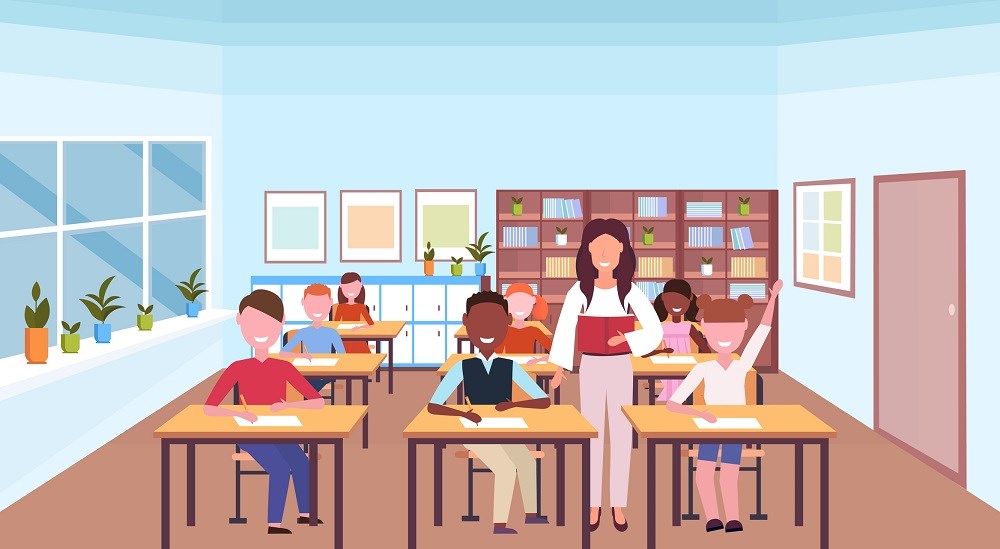What is Culturally Responsive Teaching?
Do you ever make connections between your learners' cultures, first language(s), or life experiences with your teaching? If you don’t, should you? Read on to find out more about Culturally Responsive Teaching and its relationship with teacher’s beliefs. Plus learn about how you can make changes to be more culturally responsive to learners, whilst helping them develop higher-level academic skills, in an attempt to lead to a more socially just education.

Teachers should use their learners' culture so that teaching and learning is more relevant, connections are developed and higher-level academic skills can be fostered. What today might look as something rather obvious wasn’t much discussed until few years ago. The term ‘Culturally Responsive Teaching’ (CRT) was coined by Geneva Gay and focuses on the belief that learners perform better when teaching takes into account their cultural experiences. To meet learners’ needs, teachers should look at classrooms as communities that are sensitive and relevant to their learners' backgrounds. For Gay, culturally responsive practices within classrooms are necessary if there are to be significant connections between students' experiences at school, at home and in the community. This can certainly be a challenging task for schools that enrol a large number of students from different cultures. However, these challenges are what the CRT seeks to address by pointing out approaches that can help educators reach and, perhaps, focus on students from historically marginalized groups.
I understand that CRT, at first, can sound rather abstract. Not only that but what this approach means is often depends on who you ask or where you look. So, it is worth watching this short video on Supporting Schoolwide Culturally Responsive Practice that demonstrates how CRT can actually work in practice.
Teachers’ beliefs matter
Sometimes teachers' perceptions and beliefs of their learners, their learners’ families and the community can prevent them from reaching some of their learners. For example, if teachers believe that certain groups of students tend to fail at school because they are lazy, unmotivated, linguistically deficient or have parents who do not care about their education, their expectations for their students' academic success is likely to be negatively distorted. Unfortunately, this deficit perspective has heavily impacted education. To be culturally responsive, teachers must recognise that their own cultural identity, perceptions and expectations about students affect how they relate to and engage with their learners in the classroom. It is true that it is difficult to challenge our own beliefs, especially for the teacher whose initial or continuing education did not include reflections or frameworks about cultural diversity. Teachers’ beliefs are incredibly important and heavily shape our praxis – Chiara Bruzzano discusses this further in Why we should explore and evaluate teachers’ beliefs.

Starting with CRT
In case you are wondering about how to be more culturally responsive to your learners, I would recommend looking at your own culture. To celebrate the variety of cultures in the classroom, teachers need to become aware that their cultural education has shaped who they are and how they act. Likewise, the cultural education of their learners has also shaped who they are and how they act. As we find ways to overcome cultural differences in classrooms, we begin to recognise that perhaps some of the factors contributing to such a division may be within our own cultural understandings and preferred operating norms.
As language teachers – particularly those of us in the western world – the importance of the speaking skill in the classroom is almost second nature. So, requesting students to participate by answering a question or speaking in a class discussion seems harmless. But perhaps not for a student from a different cultural heritage who does not respond; not out of disrespect, but out of deference to you as their teacher. In many cultures, students listen, they must not respond – and that is fine. Within our possibilities, we should take the time to learn about our learners’ cultural heritage which is likely to provide a better understanding of them. This, in turn, allows teachers to refrain from judgment and opens the door to continued dialogue, understanding and acceptance.

Baby steps
If you would like to give it a go and try CRT in your classes, go on and don’t be afraid. Remember that Rome wasn’t built in a day, so start small – any changes that can potentially lead to Social Justice is welcome. When you feel comfortable with the changes you have gradually made, you will probably understand that CRT is not just a set of strategies, but, in fact, a whole approach to help you reflect upon your teaching.
Have you tried to be more culturally responsive in your classes? Do please share your stories and suggestions below. We’d love to read them.

Comments
Write a Comment
Comment Submitted